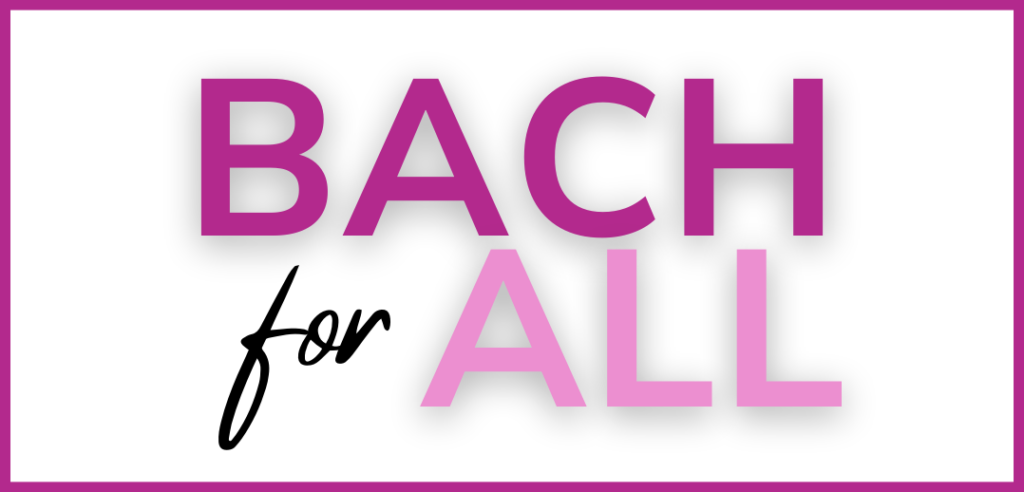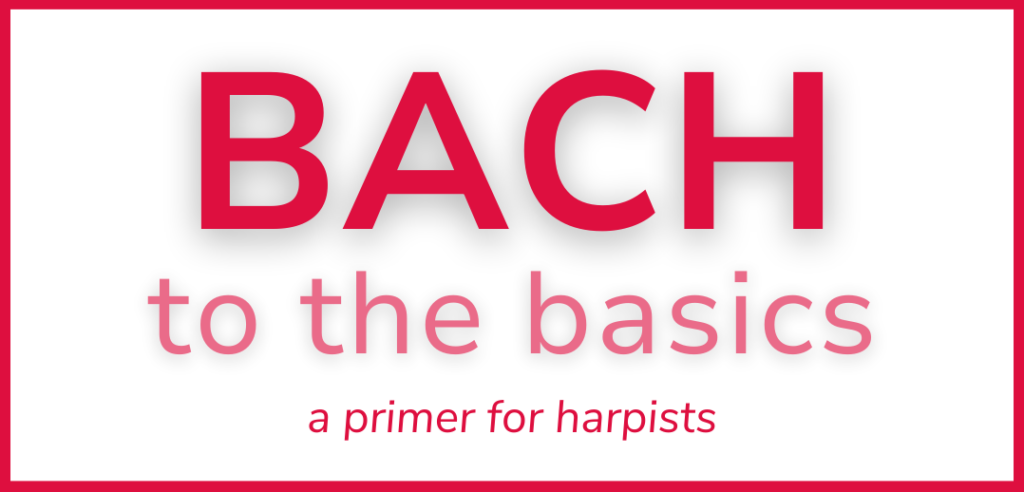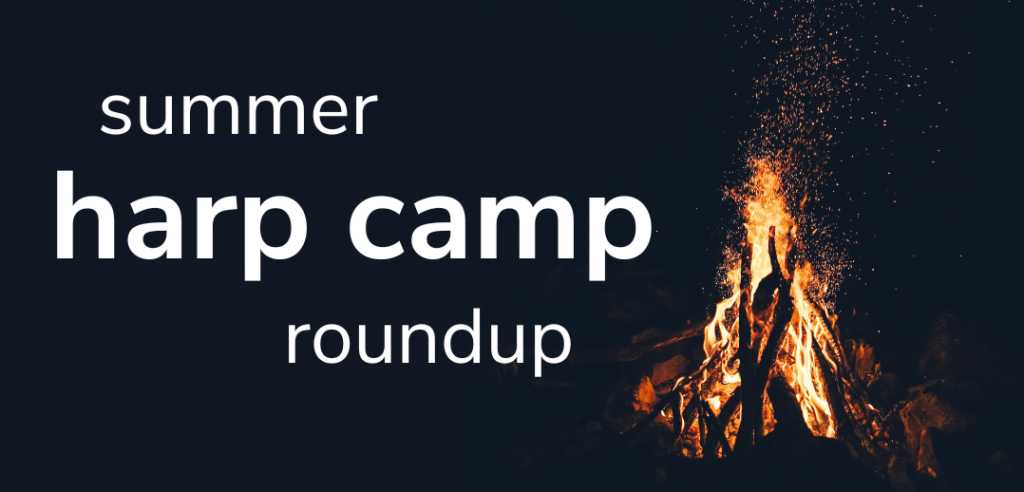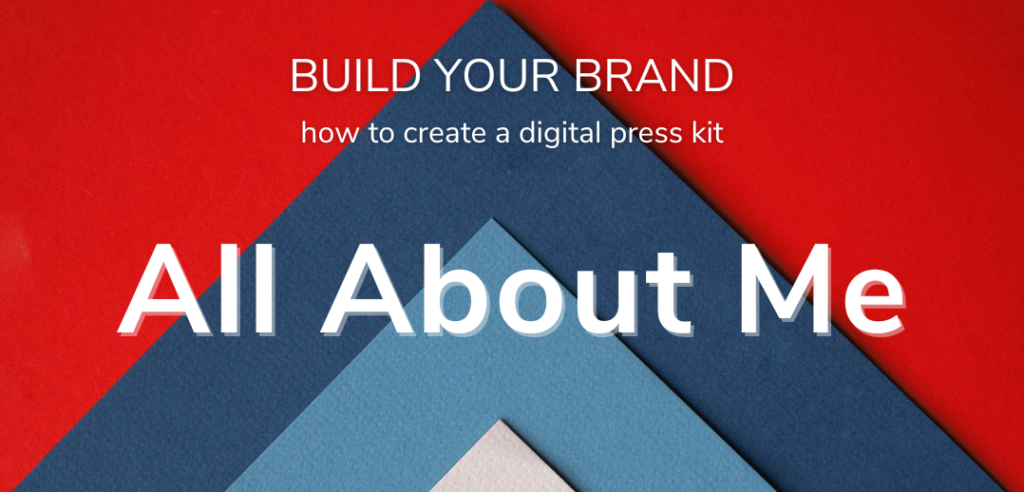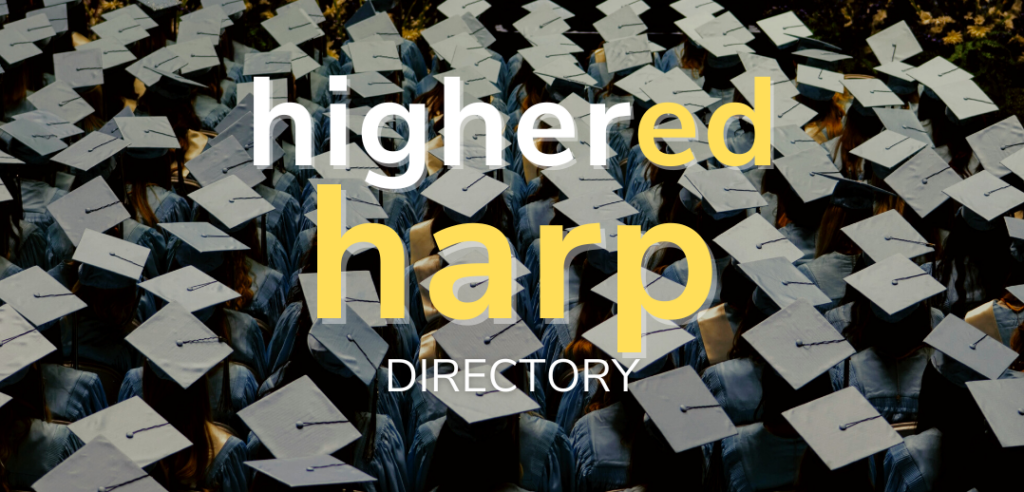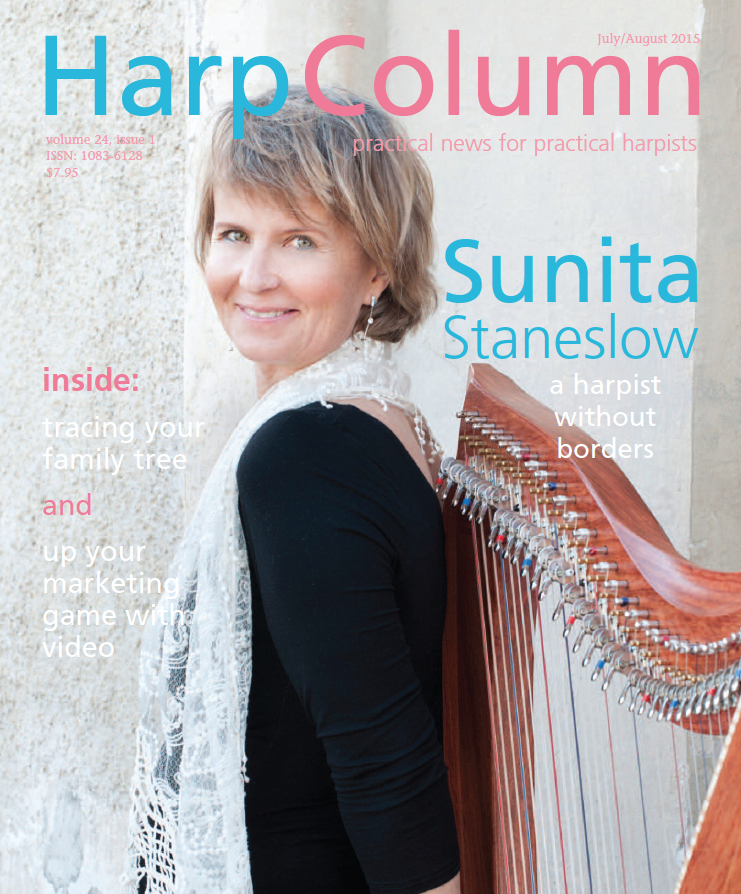—by Nadia Pessoa
YouTube Like a Pro
Want to be seen? Follow these steps to maximize your video views on YouTube.
It is well known that Google is the largest search engine in the world, but if I asked you to name the number two search engine today, what would you say? If you guessed Bing, or Yahoo!, you would be wrong. It’s YouTube. At more than one billion users and over three billion searches a month, YouTube is larger than Bing, Yahoo!, and AOL combined, and it has evolved into one of the most powerful media outlets for musicians available today. Much like MTV did for rock bands in the 1980s, YouTube has given millions of artists a platform to share their music and interact with a global audience.
There are over 1.3 million harp videos on YouTube, from covers of rock and pop songs to recitals, masterclasses, music festival auditions, wedding promo reels, and of course, behind-the-scenes shots of #practicalharpists gigging, “vlogging” (video blogs) in practice rooms, and transporting harps in the most unexpected of places. The visually striking aesthetics of harp playing make it a perfect fit for video, and the widespread availability of affordable recording technology, web cams, and smartphones means that relatively high-quality videos are cheaper and easier to produce than ever before.
We asked a few of the harpists who are creatively and effectively leveraging YouTube as part of their overall marketing strategy to share what equipment they use, what goes into shooting a music video on location, how to optimize your channel so you can connect with a wider audience, and what advice they have to get started on YouTube.
Reaching a Wider Audience

One of the advantages of sharing music online is the ability to take your music beyond the practice room—or concert hall—and reach a wider audience.
Nashville-based harpist Paula Bressman, who, with Rachel Miller form the harp duo Beyond Pluck, recognizes the need for musicians to have a creative marketing strategy in place. “In 2015, musicians have to go 10 steps farther than just having a nice business card,” she explains. “It’s not enough to have a website with beautiful photos and well-written bios. Viewers need to be able to see and hear what you do and interact with you online.”
Bressman says the idea for Beyond Pluck’s debut video “Baba O’Riley” came from a desire to connect with audiences in a fun, interactive way. “I remember clearly how it came up. I had just gotten off the treadmill at the gym, and Rachel called and said, ‘Let’s do a music video.’ After talking through all the appropriate details, we decided that our reason to do this was ‘because all the cool kids were doing it.’ Of course, that was said in jest; the reality is that music has been going in this direction for decades, and it’s time for the instrumental/classical world to catch up. We want the harp to jump on the bandwagon of fun, fresh, interactive mixed media.”
Duo partner Miller agrees, “The most interesting thing we have noticed about this YouTube channel is that it has really started a dialogue among our artistic peers, leading to future collaborations with dancers, pop musicians, classical composers, and scientists. YouTube brings Beyond Pluck off of the concert stage and into people’s everyday lives. With an active presence on social media, we’ve had the opportunity to bring the harp to people who might not have shown interest otherwise. For us, that’s success!”
Harpist Lara Somogyi also describes being drawn in by the inclusiveness and creative freedom of the YouTube community. “In YouTube’s early days,” she says, “I was utterly fascinated with the website as a viewer. I was so enthralled with the concept and began closely following some of the website’s early content creators. It was so enjoyable for me that I eventually decided to become part of the content creating community. I loved how accessible YouTube was for everyone.”

Songwriter, harpist, and vocalist Timbre Cierpke, who spends much of her time touring with her band, notes that videos are effective for gaining the attention of concert promoters. “YouTube is an avenue of discovery for listeners who would not normally have the chance to hear me,” she says. “As music culture is getting more and more saturated, people often want to know what they’re paying for before they buy an album or go to a show. A good video can show people who you are and why you are worth their time. The live videos I shot with Audiotree in Chicago have been a wonderful tool for letting people really connect with what I’m doing, and they are usually the first thing that venues look at when considering booking my band.”
Videos can also translate to more bookings for freelance harpists. This is especially true for weddings, where clients often want to see a performer in action or meet in person. Having decent quality videos can be a cost-effective way to eliminate the need for in-person consultations, and can help you stand out from the crowd as clients are evaluating other musicians.
According to the online platform Gigmasters, musicians whose profiles include videos are four times as likely to be hired than performers who rely on audio samples and photos alone.
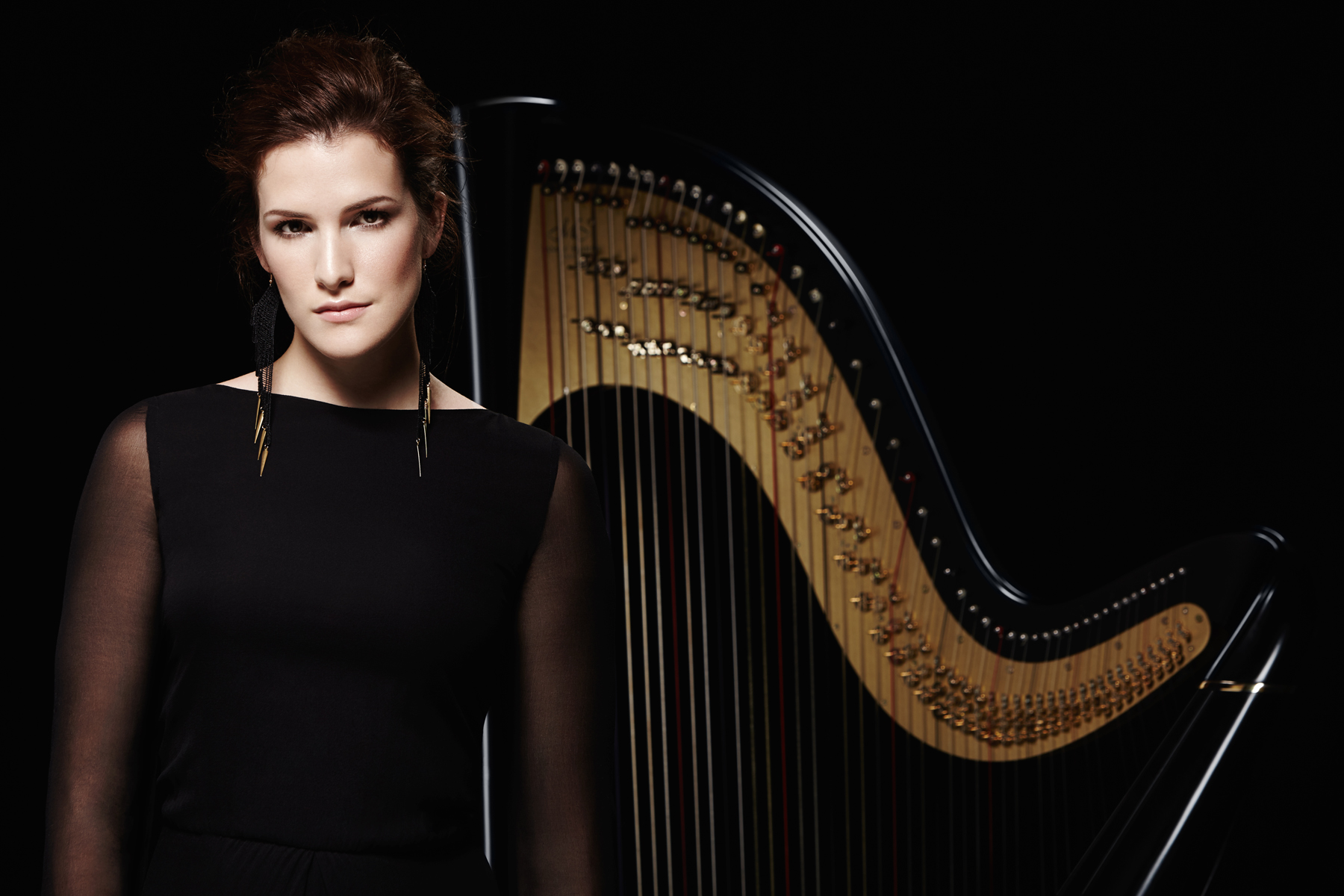
Videos can also help with visibility by giving your website a boost in terms of search engine rankings. Although Google’s spiders cannot index the video content itself, they do rely heavily on the text in video titles, tags, and descriptions (see sidebar on pg. 31 for more information). The algorithm Google uses to determine the order in which search results are displayed depends on a number of factors, one of which is the number and authority of incoming links and social shares to a given page. Since YouTube (which is owned by Google) is a popular, more authoritative site, links originating from YouTube to your personal website weigh more heavily than links from a smaller, lesser-known website or blog.
Canadian harpist Valérie Milot sums up the impact videos have on reaching a worldwide audience by adding, “I believe the internet is definitely crucial in marketing nowadays. Having good quality videos available on the web gave me the opportunity to connect with audiences from all around the world…Those videos are an investment that I have never regretted so far.”
Soloist and composer Deborah Henson-Conant, whose channel includes over 100 videos, began by uploading live concert performances and crafted promo-reels to showcase her work. She has found that the challenge of getting comfortable sharing authentic, spontaneous moments with her viewers has enabled her to conquer her initial anxiety about appearing on camera.
“I’m only recently starting to get how YouTube can be both a marketing tool, a great vehicle for self-expression, and creative challenge. As a second-generation artist, I had a lot of emotional challenges sharing myself on video. When I first started as a player, the only performances I saw on video were ‘produced’ performances on TV—so that was my model of how I should present myself on video. And it felt professionally dangerous to reveal myself as I actually am. Making the shift to the new generation where you’re capturing real moments instead of crafting a consumable video was a huge challenge.
“It’s an incredible tool for accepting and embracing humanness and sharing it.”
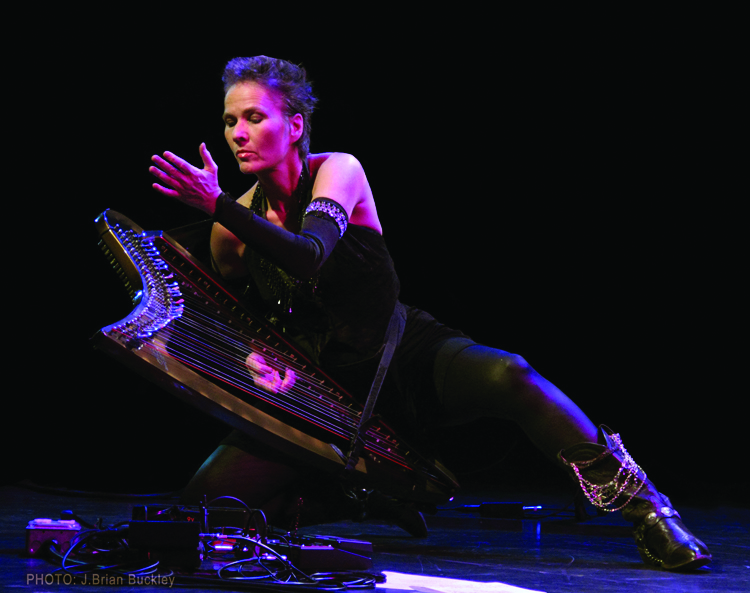
Lights, Camera, Action!
Two of the most critical factors when shooting a video are figuring out how to effectively capture the sound of the harp and the look you want to achieve.
For her instructional videos on technique, improvising, and arranging, Henson-Conant uses a direct audio input on her DHC-Light Camac harp that connects to a two-channel M-Audio interface and her Macbook Pro. She says, “I’ve tried so many different setups, and finally realized that what’s most important is to have some kind of setup I can access quickly and reliably, so that I can capture a moment of inspiration instead of losing the inspiration by fussing with the equipment to get something that ‘looks good.’
“At first, I bought some great cameras that make beautiful images but include a lot of setup and conversion time—and I finally abandoned them for a system that includes a lapel mic, a Logitech webcam, and a two-channel mixer that lets me get both my voice and the harp into the computer via USB.”
She adds that there can be a steep learning curve associated with editing videos. “I use Quicktime or Screenflow to capture the videos from the webcam, and then I edit from there—either just cropping the beginning and end and posting, or putting them into Final Cut Pro.” She explains, “None of this came easily for me. I actually took a whole 12-week course on Final Cut Pro, and it’s still a challenge.”
Her advice: “Find a simple setup that works ‘well enough,’ get comfortable with it, and then start trying to improve it little by little.”
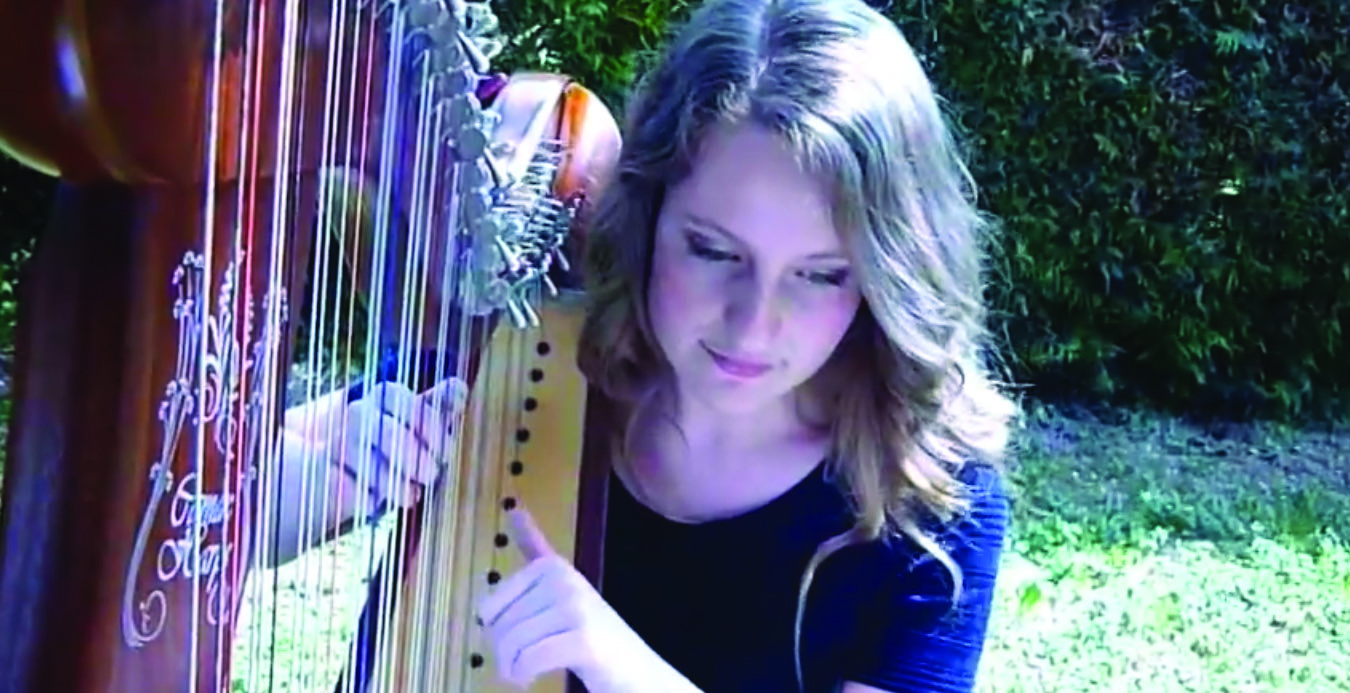
French harpist and musicology student Amélie Guiboux, whose channel featuring arrangements of pop songs and movie themes has amassed more than 11,000 subscribers, also prefers the simplicity of an efficient setup. She performs on both a lever harp and pedal harp and does not use a separate microphone. Until last summer, she filmed everything using the video function on her point-and-shoot camera. She explains that for her birthday last July, her parents surprised her with a new camcorder, “It is a Samsung HMX-F90,” she says, “that allows me to record with a better sound and a more beautiful picture.”
Guiboux spends an average of 30 minutes on each video, or more, if it is a complicated arrangement or collaboration with a vocalist. She has recorded more than 75 videos to date and has created harp arrangements of popular songs by artists including Rihanna, Coldplay, Katy Perry, Enya, and Taylor Swift. She attributes the popularity of videos such as her cover of Christina Perri’s “A Thousand Years” which has over 342,000 views, to the fact that certain beloved songs tend to capture people’s attention and are searched for more frequently.

audience and used a friend’s drone to capture aerial footage for the video.
Lara Somogyi, who has released the first three videos of her Big Blue Sessions that were funded by a Kickstarter crowdfunding campaign in 2013, started with a much simpler setup and evolved over time to using multiple camera angles and high definition. “Every video I make is a learning process and is totally different from the previous one. It’s a given that my early videos will look different from my future videos, and that’s okay.”
“The camera that I always turn to is the Canon EOS Rebel T5i,” she explains, “and to edit the videos I use Final Cut Pro X. Even though the arrangements are always performed live with the loop station and effects pedals, I record the audio in a studio beforehand to avoid unwanted outdoor noise.”
She adds that the creative process for a single video, from concept to execution, can take several months. For her cover of Bon Iver’s “Holocene,” she explains, “we had three cameras capturing the different shots. It all starts with the arrangement, which can take up to a few weeks. Then I think of what location would best fit each arrangement, organize the shoot, record the audio in the studio, and lastly, edit the video and upload it to YouTube. It all takes a lot of planning, both musically and logistically. Also, depending on where you want to film, sometimes it is necessary to get filming permits which can also take time.”
“Holocene,” which was shot in front of a live audience, also includes stunning aerial footage, which Somogyi says was filmed using a friend’s drone.
Somogyi found that commenting on other people’s videos and connecting with musicians on YouTube proved invaluable in raising awareness for her Kickstarter campaign. “I was constantly networking…I went to as many local YouTube and Kickstarter events as I could to meet and support other content creators. YouTube and Kickstarter have very supportive communities and I found that reaching out to other fundraising creators, and promoting their projects, helped mine in return. The more buzz behind your project the better! I also found Twitter to be a very useful tool. I would definitely say I spent several months before my project launch networking and definitely every moment I could during my funding period of 30 days to reach out to as many people as possible.”
For more elaborate videos in controlled settings, such as her performance of Smetana’s “The Moldau,” Valérie Milot recommends collaborating with a professional videographer and audio engineer. “To make a high quality performance video, I always work with a professional team,” she notes. “This way, I can fully concentrate on the performance and be sure that the result will be okay. Since you can never really delete something that you post online, I try to make sure that I’m satisfied with my playing before posting anything.”
Timbre Cierpke agrees. “I encourage you to hire both a sound engineer and a cinematographer. If you can’t afford a professional, reach out to local universities that have audio engineer and video departments and see if there are any seniors who might work for less money.”
For the music video for “Song of the Sun,” off her new album Sun & Moon, Cierpke partnered with her friend Derek Pearson. “I had written the song out of a moment of intense inspiration, wanting to capture the idea of calling life out of death. Derek approached me about doing a music video for it, and we had to go back and forth a few times with ideas, trying to capture the right storyline and imagery to add to the song, not to distract from it. A good music video needs to have a life of its own, resonating with the song, but also expressing its own idea. Derek came up with the idea of finding an abandoned house to shoot in, and to slowly fill it with plants and flowers, like we were bringing it back to life. Another old high school friend of mine sent me photos of this house she grew up across the street from, out in the country in Kentucky, and I immediately fell in love with it. The house itself became a character in the video, in that it had so many incredible textures and colors.
“We shot the whole video in one day, surrounded by dust and dirt, and watched this abandoned house be redeemed with art and beauty. It was a perfect symbol for the song.”
Timbre prefers using a ribbon mic with a condenser for recording, as in her video submission for NPR’s Tiny Desk Concert contest, “Your Hand Holds Home.” In it, the harp and voice play a central role in an ensemble of guitar, recorder, accordion, violin, cello, and drums. “I love the warm sound that a ribbon captures for the harp,” she says.
Harp duo Beyond Pluck encourages harpists who plan on arranging and recording pop songs to research the legal requirements involved. “To post a music video on YouTube and sell the track on iTunes and other sites, we obtain two types of licenses—a mechanical and a synchronization license. The mechanical license allows us to sell a certain number of copies over a certain period of time (usually a year) of our audio recording of our own arrangement of another person’s composition. The Harry Fox Agency is who we use for this.
“The sync license is where things get a little confusing and expensive,” Bressman and Miller add. “Even though the music in our videos is our own arrangement, the underlying composition still belongs to the songwriters. We have to write to the publishers of the songs directly, requesting a license to use the composition in our videos. Some publishers have an agreement with YouTube to collect proceeds from monetization of videos in which their songwriters’ compositions are used, and some publishers require you to pay a fee directly to them. There are no set sync license fees. They vary widely.”
The duo wanted their video of The Who’s “Baba O’Riley” to have a carefree, fun feel, and brainstormed ideas for scenes (including playing two Celtic harps in the back of a convertible, and a scene on a crowded street) with their videographer. The video debuted on YouTube in July 2014, and has over 72,800 views. “We shot this video over a few days around Nashville and Franklin, Tennessee. We invited family and friends, and friends of friends when we needed extras, and that worked well. For the street scene, we were just lucky to have a natural crowd gather while we were playing! We are happy we were able to capture that natural excitement. And yes, we moved harps, all week.”
Bressman adds, “The editing was really what took the longest, about a month. I would sit next to our director since this was the first time he had worked with harpists, and we would piece it together.”
Their latest video, Heart’s song “Barracuda,” features live drumming by Nick Buda, and both harpists found it refreshing to work with sounds and talent outside of the orchestral world.
Miller explains, “When we were listening to Heart’s original recording we noticed all of the colors they were able to create with guitar distortion and we wanted to replicate that. Since we don’t currently own electric-acoustic harps, getting an amplified sound was an adventure! We hung out with our cool sound engineer friends and they suggested a smorgasbord of gear. We liked the sound of acoustic amps the best. Then my mother got me an iRig for Christmas, and that opened up a huge variety of distortion options.”
The harp duo says that having videos on YouTube has significantly increased the amount of monthly visits to their website, and has been a great referrer of traffic on social media, particularly to their Facebook page.
Getting Started
On finding artistic collaborators, Cierpke offers the following advice: “If you are making something more along the lines of a music video, I would say that it’s important to find a director that you really resonate with. They need to understand you and your music. Try to find someone who gets excited when they hear your song, someone who connects with it. I would always rather build a relationship with another creative person than simply hire a stranger. Whether you are recording covers or recording original music, find your own voice and use it. Decide what kind of mark you want to make on the musical world, and don’t be afraid to make it.”
Bressman and Miller emphasize the importance of leveraging your network. “First, talk to your friends and make new friends. You may be surprised at all of the resources you can access and the amount of talent and creativity you have in your circle of friends and family,” they explain. “Make art together! Making a music video can be an expensive endeavor but with careful planning, a streamlined process, and a large network of creative people, it is possible to make something fun on a relatively small budget.
“Plan ahead. Create your video concept before you find someone to help you make it happen. Being direct and clear about your creative vision from the outset of the project will help your videographer to be his/her best. Providing pictures, examples of colors, outfits, settings, or even other music videos that have inspired you really help with transferring the vision from your head to someone else’s.”
Similarly, Henson-Conant explains that experimenting with creative solutions as you record (such as finding the perfect lighting, or creating your own hanging backdrop out of blue felt, hooks, and a long curtain rod) is part of the process. She encourages people who are getting started to look for online courses that can help them become comfortable uploading and sharing material, and stresses that the power of YouTube is not about crafting perfect music videos, but about sharing real experiences.
Somogyi encourages harpists who are curious to make the leap and get started. “Be passionate about what music you are playing and just upload it! YouTube is such a welcoming community to be a part of that if you want to join in—just go for it!” •
Nadia Pessoa is the harpist with the United States Army Band and teaches at Howard University.






